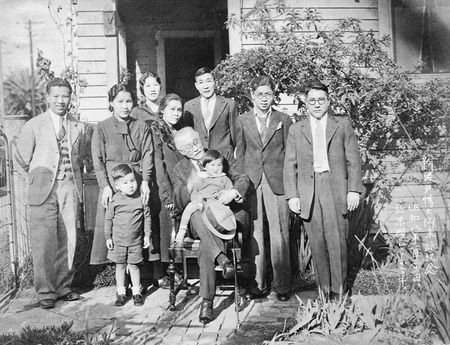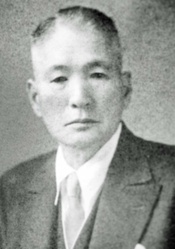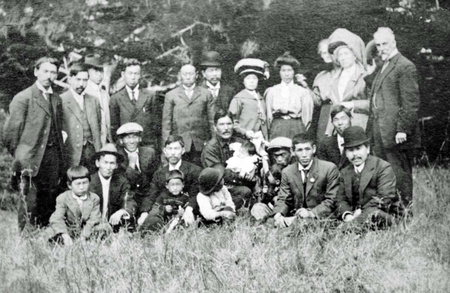It was in 1897 (Meiji 30) that Nakajiro Kotani, a young fisheries expert from Minami Boso, set off across the Pacific Ocean for Monterey, California. Monterey, which is at the same latitude as Minami Boso, was home to a large number of abalone.
As the momentum for the exclusion of Japanese Americans grew, Noda Otosaburo, a native of Taku City, Saga Prefecture, came up with the idea of catching a large amount of abalone, drying them, and selling them to Chinese people in California and exporting them to Japan, as a way for Japanese Americans to find jobs and support themselves. With financial support from Ide Hyakutaro, a general goods merchant from Fuji County, Shizuoka Prefecture, he requested that an abalone expert be sent to Japan.
Nakajiro Kotani, a graduate of the Fisheries Training School (now Tokyo University of Marine Science and Technology), was chosen for the job, and he and his brother Gennosuke traveled to the U.S. To cope with the cold waters of Monterey, the brothers used mechanical diving suits, which marked the beginning of underwater fishing in North America.
In 1902, he established a canning company in Point Lobos, located south of Monterey. However, anti-Japanese sentiment grew in America following Japan's victory in the Russo-Japanese War, and in 1915, the export of all abalone products outside of California was prohibited. However, a German immigrant, Pop Ernest, developed abalone steak, and abalone cuisine became established in California, allowing it to continue.
Nakajiro, who returned to Japan before the Gentlemen's Agreement between the United States and Japan in 1908, continued to support the business by sending divers from Japan. In 1924, Japanese immigration to the United States was completely banned, but thanks to the efforts of Kotani and others, the American government allowed a small number of divers to enter the country on the condition that they were only staying temporarily.
In America, Nakajiro's brother, Gennosuke, is more highly regarded than Nakajiro as a pioneer in the fisheries industry that connected Japan and the U.S. We speculate that this difference in perception is due to the fact that Gennosuke was a graduate of the Faculty of Marine Science, which does not exist at Keio University, and was introduced as an expert in fisheries biology.
Contrary to the surveys of Japanese Americans conducted by local historians in the United States, the sending side continued to conduct steady research while the historical facts were buried in history, and as a result, it became clear that many Japanese people had visited the Otani family, mainly in the 1930s. Among the visitors were politician Ozaki Yukio, painter Takehisa Yumeji, members of the imperial family such as Prince and Princess Asaka and Prince and Princess Takamatsu, diplomat Matsuoka Yosuke, naval officer Uryu Tonokichi, Hollywood movie actor Hayakawa Sessue, educator Nitobe Inazo, and also the Salvation Army's Kobayashi Masasuke and Yamamuro Gunpei, and socialist Miyagi Yotoku.

These are people who would normally be difficult to meet if you were in Japan at the time. This is proof of how the "region" was linked to the world.
In 1942, the Kotani family was sent to the Poston Internment Camp in Arizona, and most of the records and documents related to divers that the family had were destroyed. However, there are about 500 photographs and records related to divers in Minamiboso. In 2014, a portrait of Nitobe Inazo, autographed by him, was discovered locally.
© 2015 Masaaki Yamaguchi





